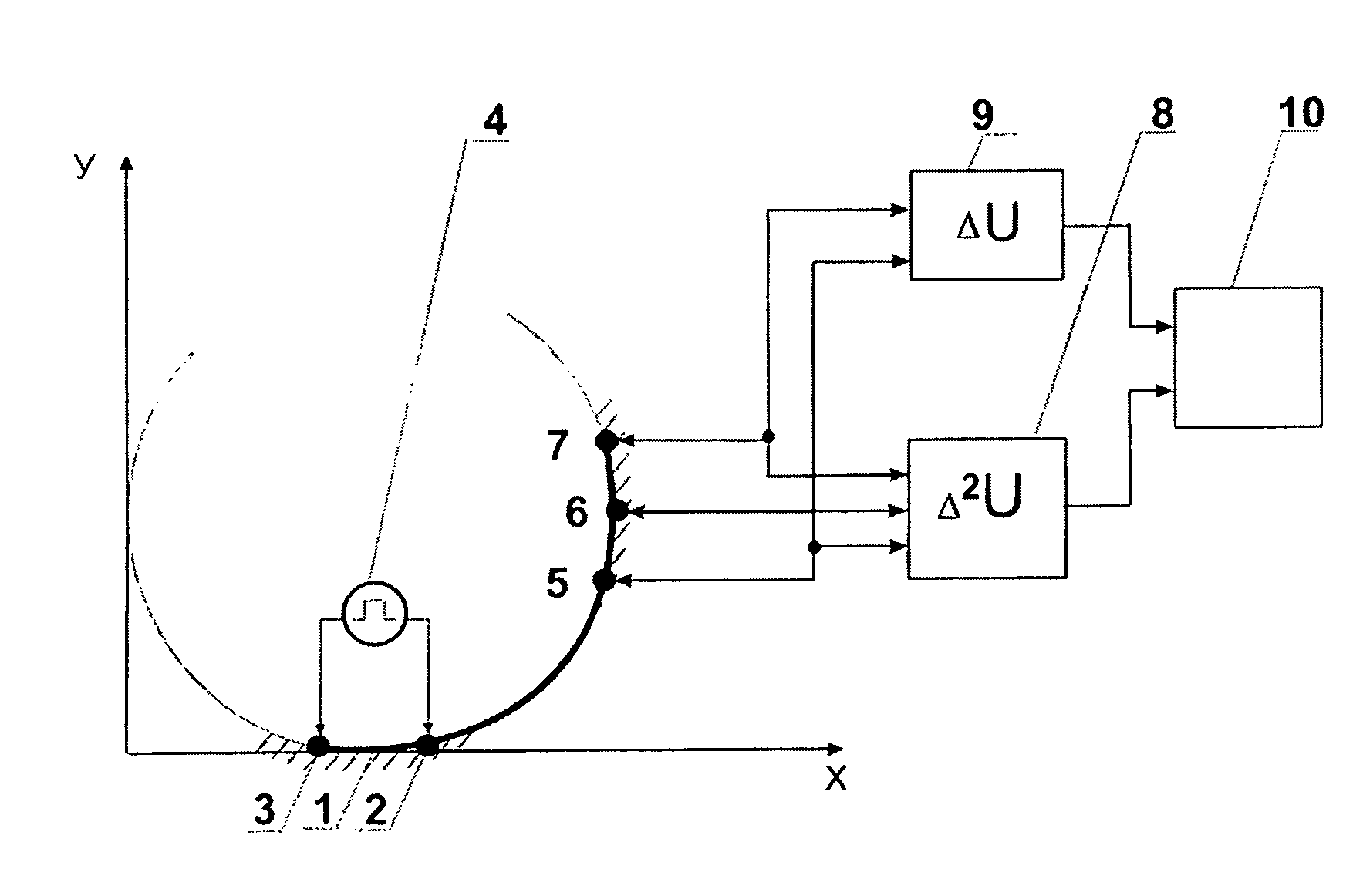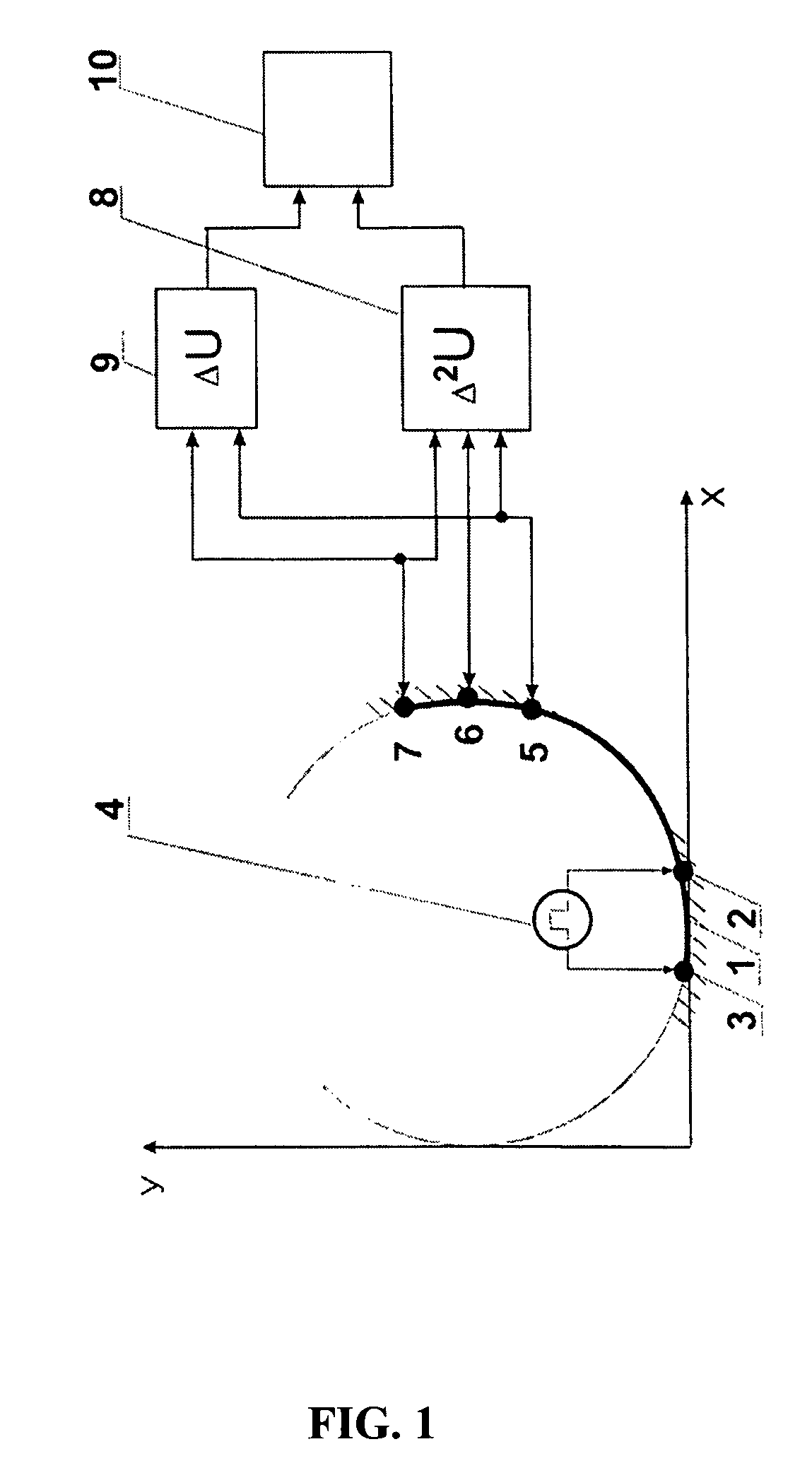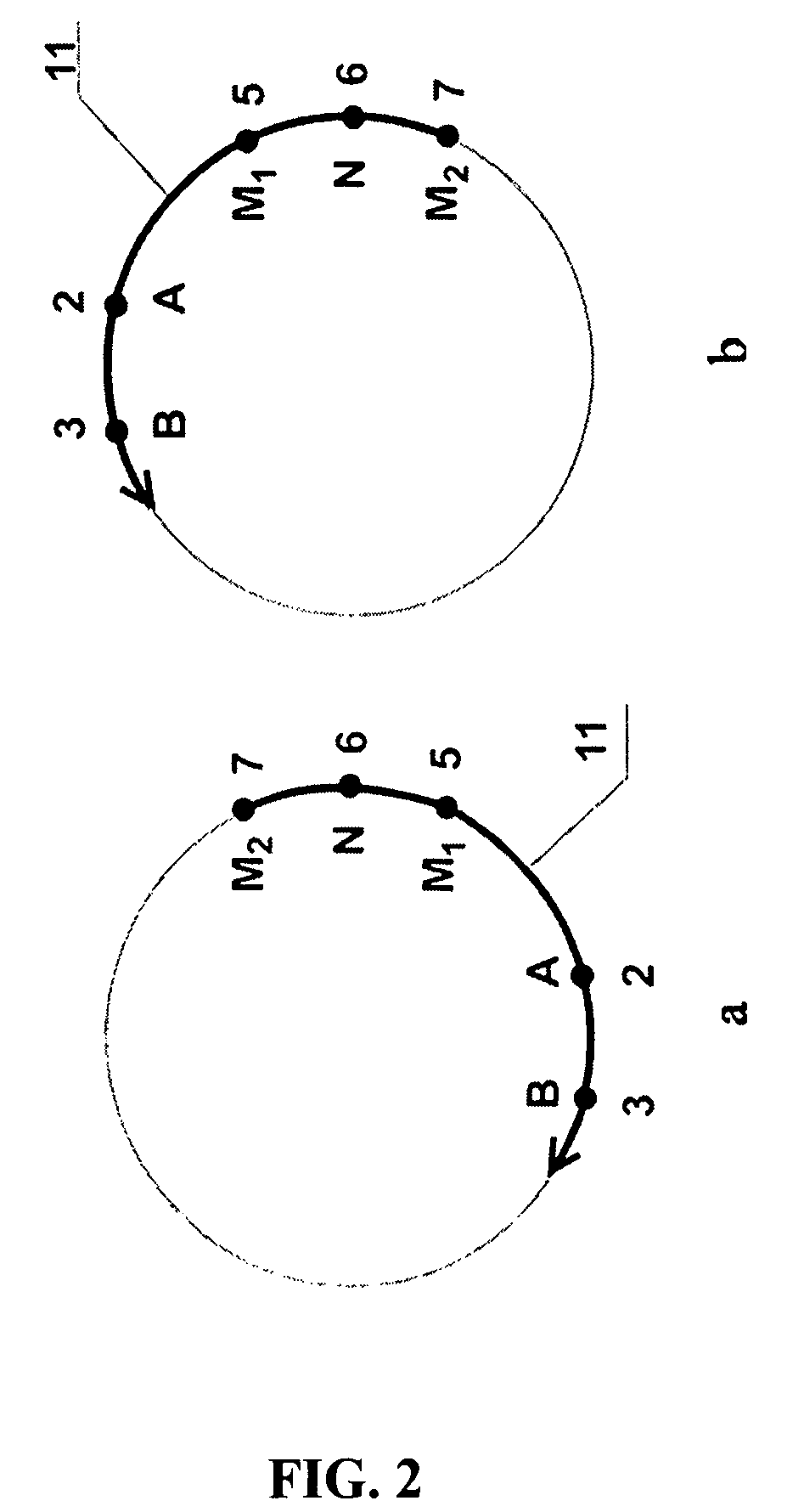Method of marine electromagnetic survey using focusing electric current
a technology of electromagnetic survey and focusing current, which is applied in the field of geological studies, can solve the problems of uncontrollable spatial distribution of current density j produced by the source, inability to obtain information about this distribution in real three-dimensional heterogeneous media, and the like. resistivity methods are hardly applicable for exploration and delineation of oil and gas deposits
- Summary
- Abstract
- Description
- Claims
- Application Information
AI Technical Summary
Benefits of technology
Problems solved by technology
Method used
Image
Examples
first embodiment
[0074]FIG. 2 shows the diagram of a circular profile line for implementation of the proposed method, using tri-electrode sensor measuring the first and the second differences of electric potentials along a circular profile line 11, at an angular distance of 90° from the dipole source AB. The measurement of the potential differences ΔUy(ti) and Δ2Uy(ti) is needed for the marine probes in deep water (50-1000 m) because these differences are absent in transient process' signals within the first isotropic non-polarizable layer (sea water) (Zhdanov, M. S., “Electric survey”, Moscow, “Nedra”, 1986, p. 259). This essentially increases the possibility to perform offshore survey and hydrocarbons exploration in deep water due to the suppression of screening influence of the highly conductive seawater layer upon the results of measurements.
second embodiment
[0075]FIG. 3 shows the block-scheme of the probe device for implementation of this method. A rectangular probe profile 12 is depicted thereon.
[0076]FIG. 4 illustrates waveforms of electric field in a homogeneous medium, wherein:[0077](a) is the waveform of current lines when using the current focusing, providing the potential difference ΔUM1M2 equal to zero; (b) is the waveform of electric field in the area of the measuring electrodes M1M2 for the current focused by using dipoles B1A1 and A2B2; (c) is the waveform of electric field in the area of the measuring electrodes M1M2 when excitation of the medium is provided by a single current dipole B1A1, without any current focusing; (d) is the waveform of electric field in the area of the measuring electrodes M1M2 when excitation of the medium is provided by a single current dipole A2B2, without any current focusing.
[0078]FIG. 5(a) illustrates a waveform of a single rectangular current pulse J of the dipole source AB, as a function of t...
PUM
 Login to View More
Login to View More Abstract
Description
Claims
Application Information
 Login to View More
Login to View More - R&D
- Intellectual Property
- Life Sciences
- Materials
- Tech Scout
- Unparalleled Data Quality
- Higher Quality Content
- 60% Fewer Hallucinations
Browse by: Latest US Patents, China's latest patents, Technical Efficacy Thesaurus, Application Domain, Technology Topic, Popular Technical Reports.
© 2025 PatSnap. All rights reserved.Legal|Privacy policy|Modern Slavery Act Transparency Statement|Sitemap|About US| Contact US: help@patsnap.com



